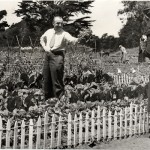Urban farming or Victory farms as they were once called is not an new concept on the American scene, but in the evolving age of renewable energy technologies such as solar, wind power and innovative rain capture systems there a growing interest in the issue. Dickson Despommier, a Columbia University professor is becoming a recognizable face in the concept of vertical farm or sky farms.
As Despommier points out a group of cities around the globe are exploring options on how to incorporate these technologies into their urban growth plans.
________
What’s your Solar Power?
Free Solar Evaluation Click Below
_________________
Listen to n The Mix with Carol McClelland with
Founder Green Career Central
_____________________
Loop Current Drawing The BP Oil Disaster To Florida Keys
by Brad Johnson
Even as some government and BP officials downplay the extent of the growing oil disaster in the Gulf of Mexico, a terrible threshold has been crossed: the slick has been captured by the Loop Current, which draws water from the Gulf through the Florida Keys and into the Gulf Stream along the Atlantic coast. SkyTruth president John Amos, one of the first independent experts to warn the official estimates of the leak were radically too small, calls Monday’s satellite imagery “disturbing“:
Today’s MODIS / Terra satellite image is the most cloud-free we’ve seen in many days, and what it reveals is disturbing: part of the still-massive Gulf oil slick has apparently been entrained in the strong Loop Current, and is rapidly being transported to the southeast toward Florida. The total area covered by slick and sheen, at 10,170 square miles (26,341 km2), is nearly double what it appeared to be on the May 14 radar satellite image, and is bigger than the state of Maryland.
See the satellite image overlaid with a model of the Loop Current in the Gulf of Mexico:
| Composite image of MODIS satellite image and National Weather Service HYCOM ocean current model. Constructed by Brad Johnson, ThinkProgress Wonk Room. |
The Loop Current Jeff Hoffmeyer, a marine scientist with the University of Southern Mississippi Center for Fisheries Research and Development, told the Wonk Room two weeks ago of the frightening consequences of the slick getting caught in the Loop Current:
If it gets entrained into the Loop [Current], it’s up into the Atlantic. And who knows where it’s going to go from there. As it moves around Florida, the next or another critical area would be the Florida Keys and the coral reefs we have down there. I don’t even want to think about that area being covered in oil. Once it works its way up the East Coast and potentially crossing the Atlantic, it could be far-reaching.
Over 625,000 gallons of toxic dispersants have been sprayed on the oil slick, including 45,000 gallons of dispersants injected directly at the wellhead — creating an invisible toxic cloud of unknown size a mile below the sea surface.
__________________
Lewis Griggs on HUMAN SPIRIT AT WORK
SUBSCRIBE TO UPDATES HERE






